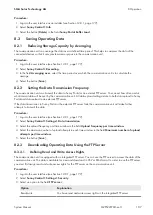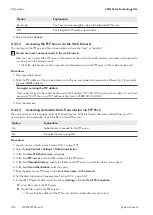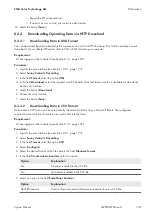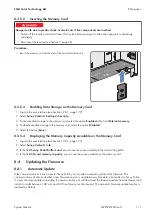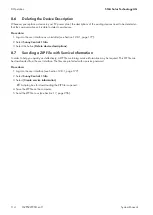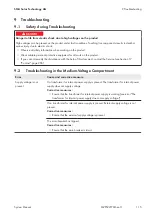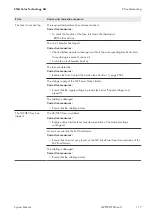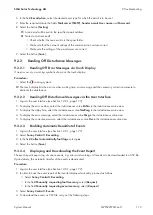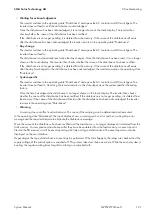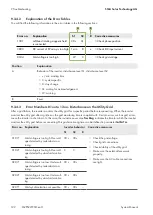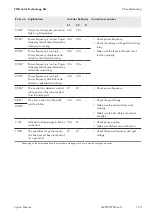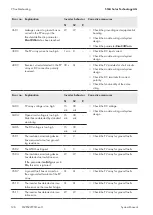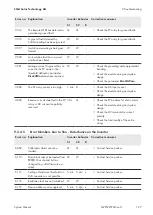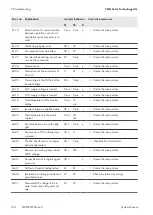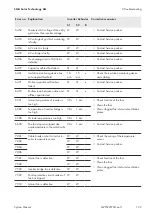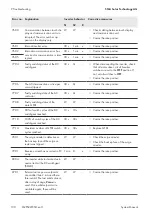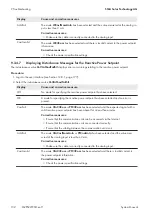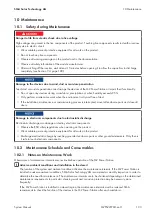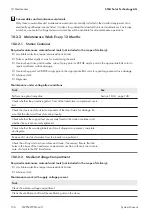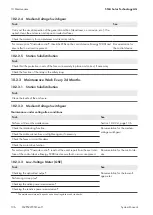
•
Waiting for acknowledgement
The inverter switches to the operating state "Disturbance" and opens the AC contactor and DC switchgear. The
inverter does not feed in until the disturbance is acknowledged.
Once the disturbance has been acknowledged, it is no longer shown on the touch display. The inverter then
checks whether the cause of the disturbance has been rectified.
If the disturbance is no longer pending, it is deleted from the memory. If the cause of the disturbance still exists
after the disturbance has been acknowledged, the inverter remains in the operating state "Disturbance".
•
Day change
The inverter switches to the operating state "Disturbance" and opens the AC contactor and DC switchgear. The
inverter does not feed in.
The disturbance is automatically reset when the day changes. Once the disturbance has been reset, it is no longer
shown on the touch display. The inverter then checks whether the cause of the disturbance has been rectified.
If the disturbance is no longer pending, it is deleted from the memory. If the cause of the disturbance still exists
after the day has changed or the disturbance has been acknowledged, the inverter remains in the operating state
"Disturbance".
•
System-specific
The inverter switches to the operating state "Disturbance" and opens the AC contactor and DC switchgear. The
inverter does not feed in. How long the inverter remains in this state depends on the system-specific influencing
factors.
Once the time has elapsed, the disturbance is no longer shown on the touch display. The inverter then checks
whether the cause of the disturbance has been rectified. If the disturbance is no longer pending, it is deleted from
the memory. If the cause of the disturbance still exists after the disturbance has been acknowledged, the inverter
remains in the operating state "Disturbance".
•
Warning
A warning does not affect inverter behavior. The cause of the warning must be determined and remedied.
In the operating state "Disturbance", the touch display shows a warning symbol, error number, waiting time, error
message and the required measure to eliminate the disturbance message.
Once the cause of the disturbance has been rectified and the disturbance is no longer displayed, it is deleted from the
fault memory. To view previous disturbances after they have been deleted from the fault memory, an event report is
filed on the SD memory card. The event report logs the time and type of disturbance. The event report can also be
displayed on the user interface.
Depending on the type of disturbance, a reset may be performed. When this happens, the relays are checked and the
supply voltage of the control system is switched off. This process takes less than one minute. While the control system is
booting, the regular waiting times for grid monitoring are complied with.
9 Troubleshooting
SMA Solar Technology AG
System Manual
121
MVPS22JP-SH-en-11
Summary of Contents for 1000-1SC
Page 257: ......

